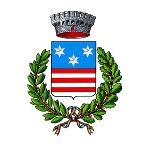Chiesa di San Giuliano
Ultimo aggiornamento: 16 ottobre 2024, 11:55
Annessa al monastero delle Benedettine, ed è a una navata. Gli stucchi decorativi sono stati realizzati dal palermitano Francesco Alaimo (1749). Rifatti nel XX secolo. Esisteva prima del 1495, anno in cui cessò di essere “Parrocchia”. Sul soffitto si legge: “ECCLESIAE MAJOR HYERACI OLIM PAROCHIALIS S.IULIANI”.
Fu restaurata una prima volta nel 1819 in seguito ai danni subiti nel terremoto del 1818. Del 1859 è l’altare maggiore lavorato in legno da Gaetano Durante da Palermo. Tutto il pavimento e gli altari laterali sono stati rifatti nel 1964 per munificenza di Don Giacomo Scancarello che per 32 anni aveva assistito spiritualmente le suore.
Opere: A sinistra:
Statua: Raffigura San Lorenzo. In legno. 1492. Indorata nel 1631 e 1764.
Tela: Rappresenta l’Annunciazione della Madonna. 1755.
A destra:
Statua: Raffigura San Giovanni Evangelista. In legno. Restaurata e indorata nel 1764. Preziosa icona del tardo seicento.
Tela: Raffigura San benedetto, Santa Scolastica, San Mauro e San Placido primi discepoli di San Benedetto. Nel margine inferiore destro si legge : “GIOV. PRATRICOLO P.NEL 1834 - SOTTO IL GOVERNO DI D.M. PAULA ALBANESE ABBADESSA” :
Altare: In marmo con quattro colonnine doriche. Nella parte sottostante un urna con il simbolo di San Benedetto. Tabernacolo in marmo con agnello dell’Apocalisse con i sette sigilli.
Pulpito: In ferro battuto del 1652.
Altare sagrestia: In legno. 1700. Con cinque pannelli colorati raffiguranti : San Gertrude, San Agnese, Redentore, Santa Cecilia, Santa Scolastica. Di impronta tardo-manierista. Il dipinto si può ascrivere tra il XVIII e l’inizio del XIX secolo. Una cultura riconducibile agli esiti pittorici di un artista quale Filippo Randazzo e/o del suo allievo Ottavio Volante.
Via Crucis: Stampe inglesi del 1700.
**************************
Church of San Giuliano
Attached to the Benedictine monastery, and is one-aisled. The decorative stuccoes were made by Palermo-born Francesco Alaimo (1749). Redone in the 20th century. It existed before 1495, when it ceased to be a "Parish." The ceiling reads, "ECCLESIAE MAJOR HYERACI OLIM PAROCHIALIS S.IULIANI."
It was restored a first time in 1819 following damage in the 1818 earthquake. From 1859 is the high altar worked in wood by Gaetano Durante from Palermo. The entire floor and side altars were redone in 1964 through the munificence of Don Giacomo Scancarello who had spiritually assisted the nuns for 32 years.
Works: Left:
Statue: Depicting St. Lawrence. Wooden. 1492. Gilded in 1631 and 1764.
Canvas: Depicts the Annunciation of the Virgin Mary. 1755.
Right:
Statue: Depicts St. John the Evangelist. Wooden. Restored and gilded in 1764. Valuable icon of the late 17th century.
Canvas: Depicts St. Benedict, St. Scholastica, St. Maurus and St. Placidus early disciples of St. Benedict. The lower right margin reads : "GIOV. PRATRICOLO P.NEL 1834 - UNDER THE GOVERNMENT OF D.M. PAULA ALBANESE ABBESS." :
Altar: In marble with four Doric columns. In the part below an urn with the symbol of St. Benedict. Marble tabernacle with lamb of the Apocalypse with the seven seals.
Pulpite: In wrought iron from 1652.
Altar sagrestia: Made of wood. 1700. With five colored panels depicting : St. Gertrude, St. Agnes, Redeemer, St. Cecilia, St. Scholastica. Of late Mannerist imprint. The painting can be ascribed between the 18th and early 19th centuries. A culture traceable to the pictorial achievements of an artist such as Filippo Randazzo and/or his pupil Ottavio Volante.
Via Crucis: English prints from the 1700s.


